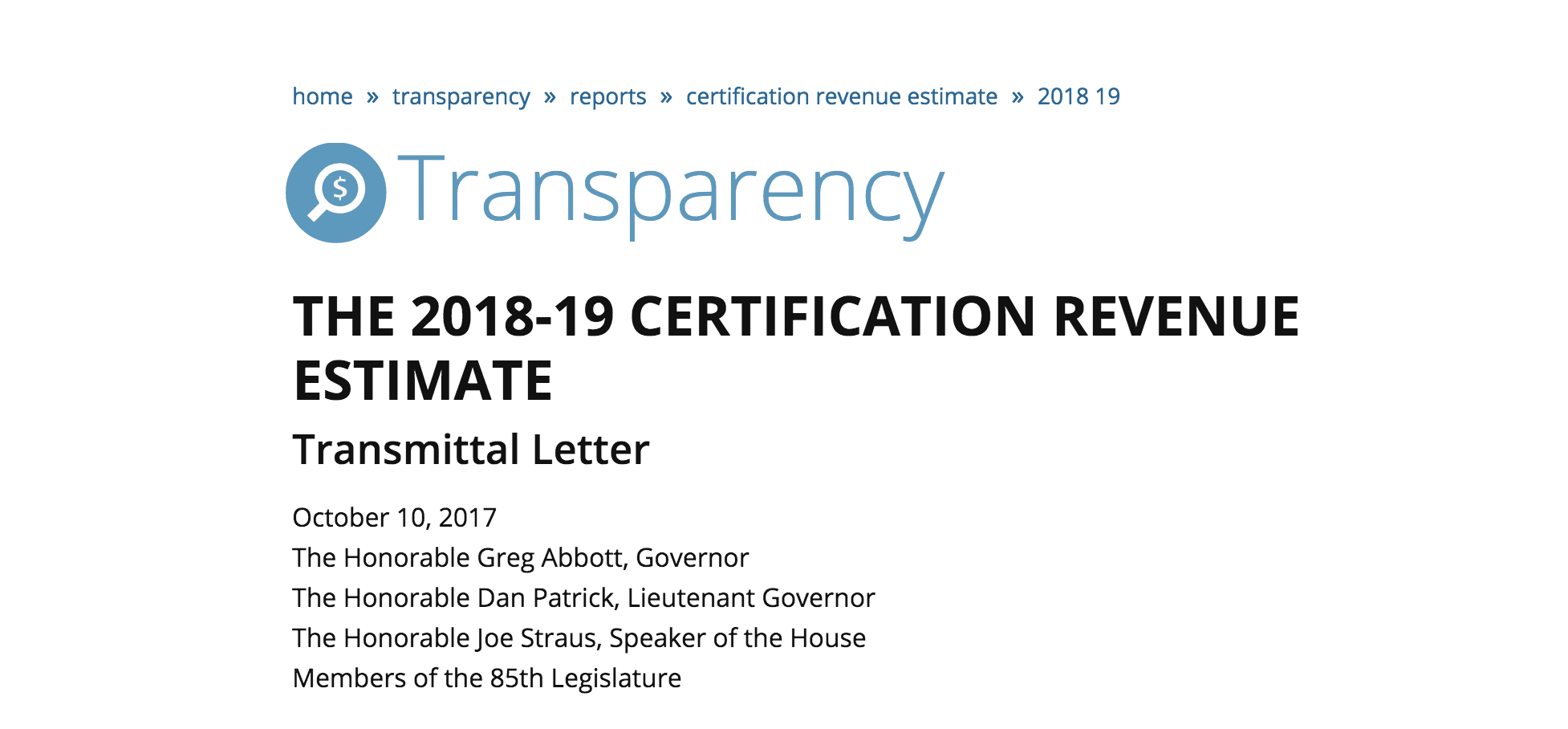The Comptroller’s just-released revenue update predicts that the Texas economy will continue to grow steadily in 2018 and 2019, as measured by total number of jobs, personal income, or Gross State Product. But that economic growth – now forecast to be slightly better the Comptroller predicted back in January 2017 – is not expected to reduce the state’s fiscal challenges anytime soon.
The Certification Revenue Estimate, as it’s called, details how much Texas will collect from state taxes and other revenue to support public schools, universities, health care, transportation, and other services used by almost 29 million Texans. Total tax collections are estimated at $107.1 billion in the next two years – a scant 0.3 percent improvement from the $106.8 billion estimate the Comptroller gave legislators right before the regular 2017 session started.
Looking just at General Revenue (which largely goes to education and health care), the forecast back in January was $105 billion. This fell far short of the bare-bones The revenue shortfall was no surprise to anyone paying attention to what recent legislative sessions have done: cut the franchise tax by $2.6 billion in 2015 alone and diverted General Revenue away from the sales tax ($4.7 billion in 2018-19) to highways.
After much wrangling, the legislature and Governor compromised on General Revenue spending of $107 billion for 2018 and 2019 – with a $2 billion “IOU” likely created for Medicaid – plus $1 billion General Revenue to pay the rest of 2017’s bills.
So where did any of the new money come from to balance out $108 billion in spending?
Very little is from the improved economic outlook, as mentioned above. Instead, House and Senate budget-writers agreed to delay almost $1.6 billion of the sales tax Highway Fund transfer so that it won’t take place until September 2019. This one-month delay makes that $1.6 billion available for balancing the General Revenue part of the 2018-2019 budget, even though it will ultimately be spent on highways, which receive almost no General Revenue. The maneuver is all smoke and mirrors, or at best “kicking the can down the road.”
The October revision also shows that another smoke and mirrors trick is once again rearing its ugly head: so-called “hoarding” of General-Revenue-Dedicated (GR-D) balances that are legally earmarked for various programs, such as the Texas Emissions Reduction Plan. These GR-D dollars come from things like fishing or hunting licenses and landfill “tipping fees.” There’s a long-running controversy about these funds, since most Texans think they actually go to the causes they are for, when in fact leaving them unspent helps balance the overall state budget. The practice can also create unfunded mandates and other problems for local governments.
GR-D balances will reach a new high of $5.3 billion by the end of 2019 – up from the peak of $4.9 billion in the very tough 2012-2013 budget cycle. This dramatically scales back the progress made in the last two budgets of either using these dollars for their intended purposes or not collecting them at all.
The economy and state revenue could grow even more rapidly than predicted in this October revision by the Comptroller, but that still might not provide more breathing room for the current or next (2020-2021) General Revenue budgets, depending on the timing. For instance, up to $190 million in additional “unforecast” sales tax revenue in 2018 would still go to highways, while most of any unpredicted growth in oil and natural gas production taxes would go to the Economic Stabilization (Rainy Day) and State Highway funds. Before releasing the Certification Estimate, the Comptroller had also indicated that the impact of Hurricane Harvey on both state revenue and state spending will not be known for quite some time. Interim hearings by the House and Senate on Harvey-affected state services will shed more light on the spending side of that equation.
